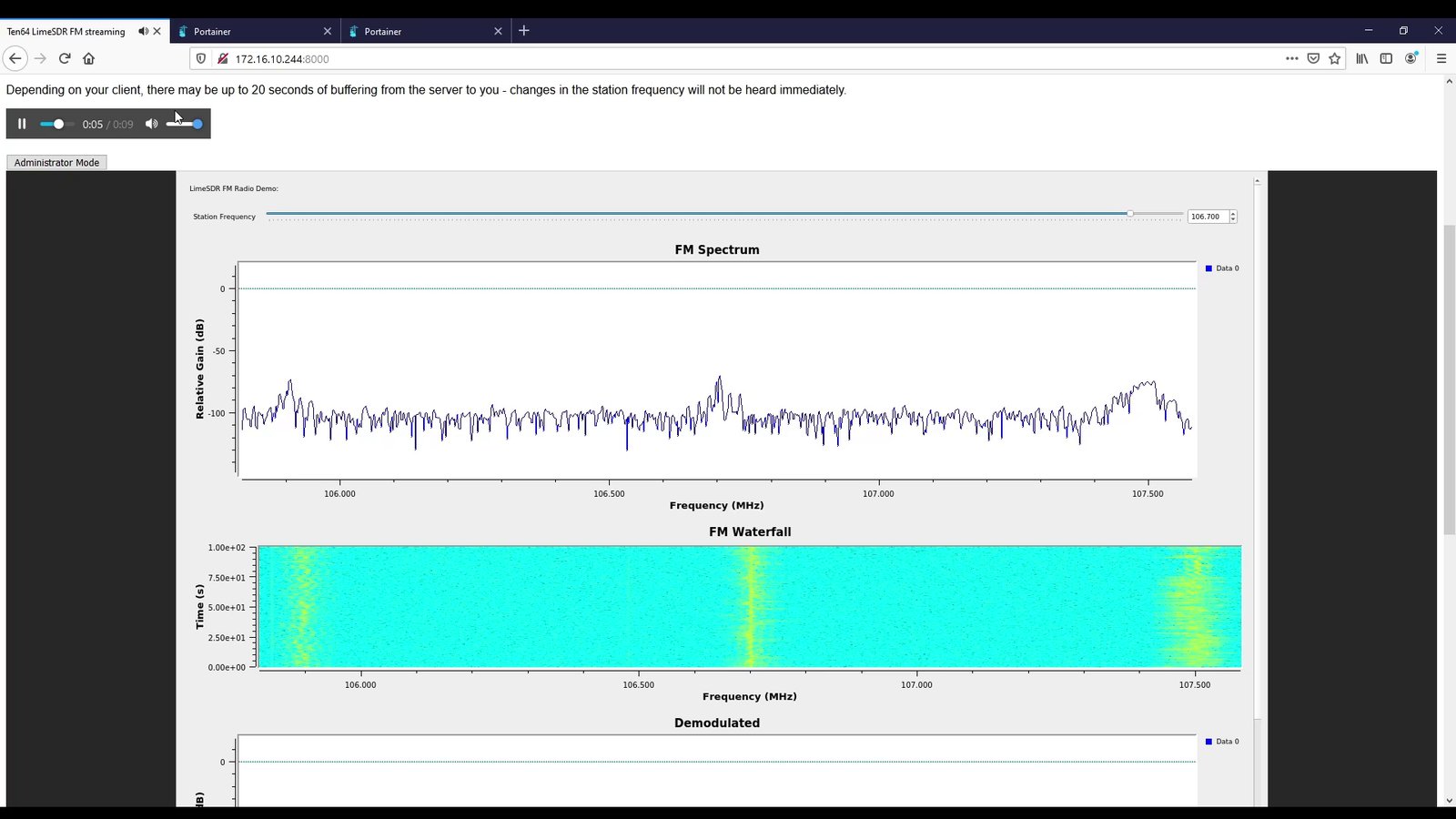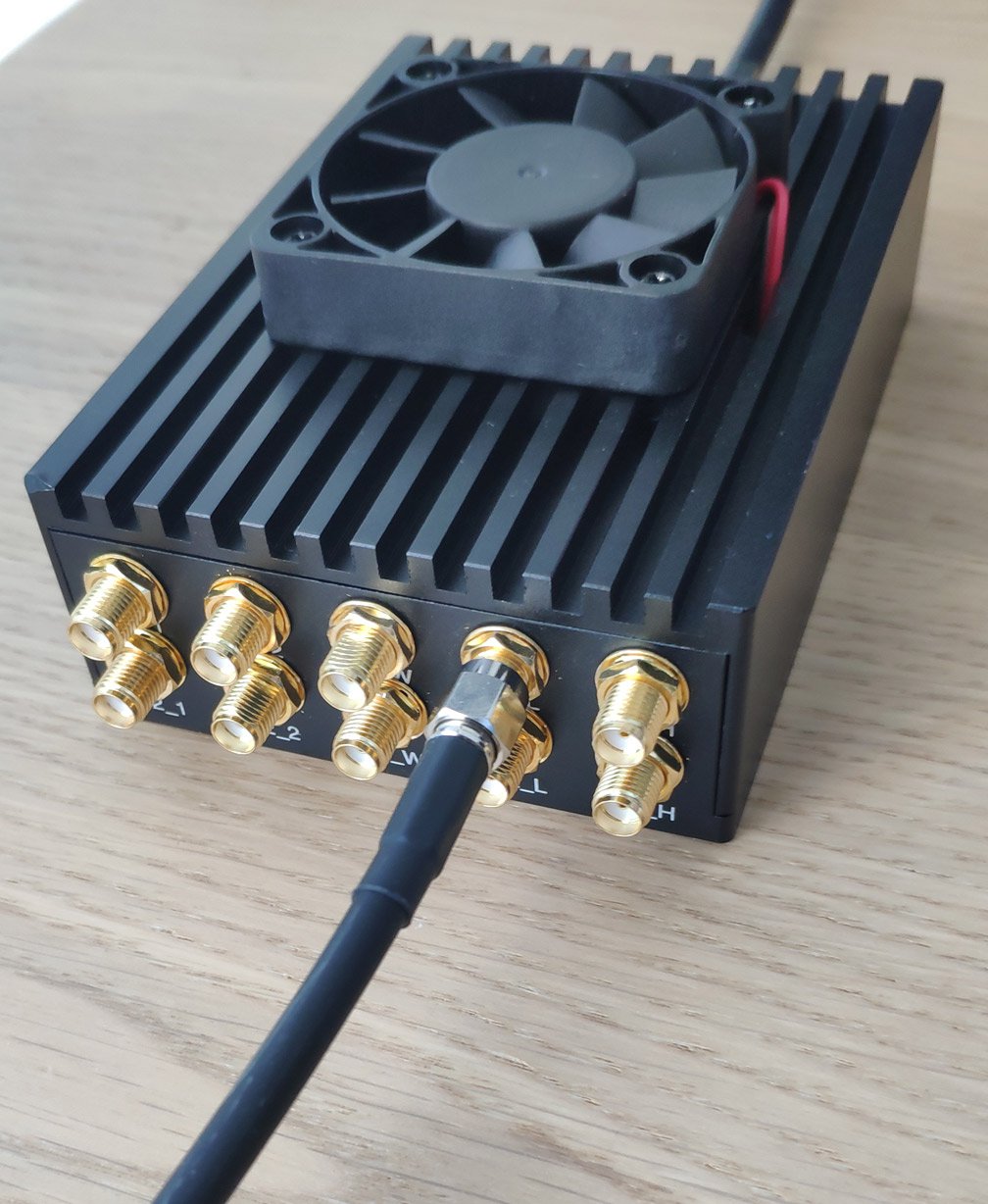
There has been quite a bit of interest in using Ten64 for software-defined radio (SDR) applications, so we have put together a simple demo using a LimeSDR to tune into an FM radio station and stream it to the internet.
Channel Surfing
This one-minute video shows the demo in action - from listening to the stream in a web browser, to changing the radio station and viewing the container backend in Portainer.
The Technical Details
A lot of the entry-level tooling around software-defined radio is designed for client/workstation use, such as Gqrx, PothosWare, and the GNU Radio Companion. Finding something web-based and/or "headless" proved to be a bit of a challenge, so we built a demo which, while showing a useful use case, could also be used as a starting point for your "edge" software-defined radio applications.
This demo is deployed as a container stack using docker-compose as follows:
- The "tuner" container which houses the GNURadio based demodulator. The audio from the demodulator is piped through the JACK Audio Server to DarkIce, which encodes the uncompressed audio into MP3. The visualizations (using GNURadio's QT widgets) are displayed using an X11 VNC server. It's not the most web friendly way but it's less resource intensive (server and client) than other methods I tried. (By default, VNC access is limited to view only; a password is required to get full access to the UI with the radio frequency control.)
- An Icecast audio server to handle audio streaming to clients, both in a web browser and via a compatible Icecast/Shoutcast client (such as VLC or MPlayer).
- A "frontend" container running nginx which acts as a frontend proxy for Icecast and a WebSocket proxy for the VNC server in the tuner.
The above container stack can be deployed both directly on the hardware, or under a VM (with at least two CPU cores) using USB passthrough.
This architecture could be extended in various ways, for example, with multiple tuner instances feeding a single Icecast instance, or by moving the frontend components into the cloud. If you don’t need visualizations, you can export a GUI-free, completely headless tuner application from the GNURadio Companion.
You can find the source code for the demo in our GitLab repo.
Tips on Using a LimeSDR with Ten64
One advantage of the LS1088 over other ARM SoCs seen in many multimedia-focused boards is that it has multiple high-speed buses: two USB 3 controllers and three PCI Express 3.0 controllers. This means bandwidth-intensive hardware such as software-defined radios can have a direct connection which is not shared with other system peripherals. This has benefits for latency and jitter as each of these high-speed controllers have their own interrupt lines to the CPU.
- Ten64 provides a USB 3 port directly from the LS1088 SoC on the rear panel. This lower USB 3 port has its own controller instance on the LS1088 and is not shared with the other USB 3 ports, meaning the full 5 Gbit/s USB 3.0 bandwidth is available to the LimeSDR. If you need even more bandwidth for higher sampling rates, a passive adaptor could theoretically be used to connect the LimeSDR PCIe edition (or similar hardware, such as XTRX with the PCIe x2 adapter) to the M.2 Key M slot ("SSD slot") with its two PCI Express lanes - up to 10 Gbits bandwidth with PCIe 2.0, 20 Gbits with PCIe 3.0.
- For the best stability, make sure your LimeSDR has adequate cooling. Even at low sampling rates (under 2 Msps), I found my bare LimeSDR board got hot enough to cause disconnects after 30 to 60 minutes.
After installing my LimeSDR in a Lime AC Case, the FM radio streaming server was able to operate for more than 96 hours without issues.


